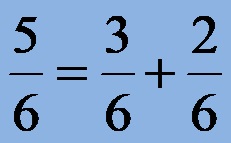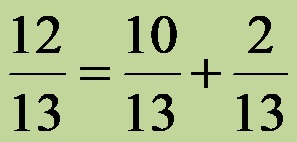Learn all about composing and decomposing numbers! In this text below on the page, you have the opportunity in one place, at once, to see composing and decomposing of numbers represented by different types (whole numbers, decimal numbers, fractions). Here, in the standard composing and decomposing of numbers used in kindergarten, you will see how these procedures are applied to decimal numbers, but also to fractions, which usually no one tries to compose or decompose! We are convinced that here you will see different information and unique methods that will keep your attention! Continue reading below in the text!
Composing And Decomposing Whole Numbers
If we want to complete composing and decomposing whole numbers, then we need to put each digit of the number in its proper place in relation to the place value! Let’s look at an example of factoring an integer! Look at the example with number 1!
Example 1: Decompose the number 9473!
The decomposition of the number 9473 should look like this:
9473=9000+400+70+3
From the decomposition, it can be seen that in the number 9473, the digit 9 has the place value of thousands, the digit 4 has the place value of one hundred, the digit 7 has the place value of tens, and the digit 3 is in the place of ones!
Let’s now look at an example where we need to perform whole number composition! Look at the example with number 2!
Example 2: Represent the sum of the numbers below in proper form!
2000+300+80+5=?
If an integer is represented in this way, and we need to compose it, then we also need to pay attention to the place value that each digit will have after composing. Therefore, in the result, digit 2 will have a local value of thousands, digit 3 will have a local value of one hundred, digit 8 will have a local value of tens, and digit 5 will occupy the local value of units!
After the compilation is complete, the result should look like this:
2000+300+80+5=2385
Composing And Decomposing Decimals
If we want to complete composing and decomposing decimals, then we need to put each digit of the number in its proper place about the place value! Let’s look at an example of decomposing decimals! Look at the example with the number 3!
Example 3: Decompose the number 17.85!
The decomposition of the number 17.85 should look like this:
17.85=10+7+0.8+0.05
From the decomposition, we understand that in the number 17.85, digit 1 has the place value of tens, digit 7 has the place value of ones, digit 8 has the place value of tenths, and the digit 5 is in the place of hundredths!
Let’s now look at an example in which we need to perform composing decimal number! Look at example number 4!
Example 4: Represent the sum of the numbers below in proper form!
20+4+0.9+0.06=?
If a decimal number is represented in this way, and we need to compose it, then we also need to pay attention to the place value that each digit will have after adding the decimals. Therefore, in the result, digit 2 will have the place value of tens, digit 4 will have the place value of ones, digit 9 will have the place value of tenths, and digit 6 will occupy the place value of hundredths!
After the composition is complete, the result should look like this:
20+4+0.9+0.06=24.96
Composition And Decomposition Of Fractions
The composition and decomposition of fractions are in use in different situations and in a different ways, which may or may not be according to the local value of the numerator, or composition and decomposition of the numerator by representing it as a set of numbers!
Let’s decompose a fraction in two different ways! Look at the example with number 5!
Example 5: Decompose the fraction below in two different ways!

First method! If necessary, or if we want the numerator of the fraction above (the numerator is the number 5), then we can decompose it like this:

Second method! Nothing prevents us, if we have the desire or need to decompose it in this way:

Do you want to do the opposite? Do you want to compose the right sides of the equations above? Then we practically operate – addition of fractions with the same denominators which is extremely easy!
If we want to decompose the numerator of a fraction by place value, then we can implement the decomposition into fractions in this way that follows the example with the number 6! Finally, take a look below!
Example 6: Decompose the fraction below!

If we want to decompose a fraction by the place value of its numerator, then the numerator of the fraction above the digit 1 is in the place of place value tens, while the digit 2 is in the place of place value ones. Therefore, the decomposition of the fraction should look like this:

Final Words
Our website is full of useful mathematical information, rules, and examples. If you like the way we present every mathematical information, we suggest you stay connected with our pages! We have pages on social networks! In the future you will always be informed when we publish new content!







